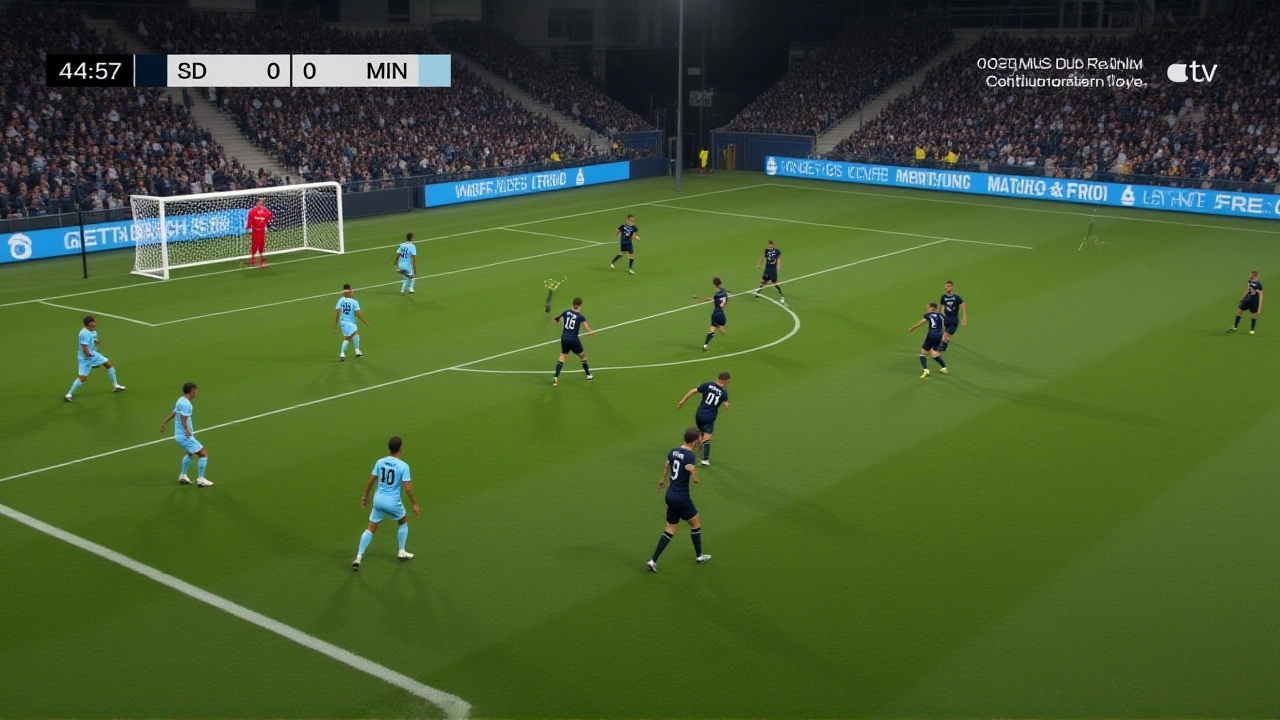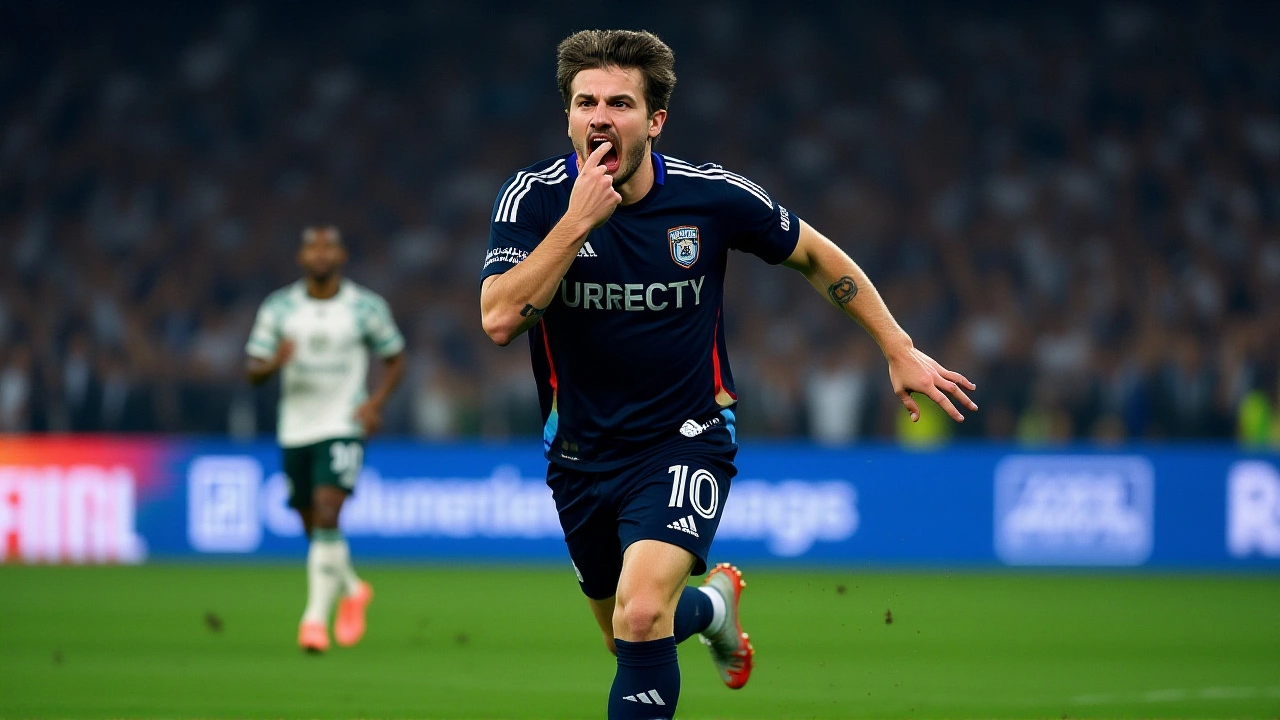On a crisp November night in San Diego, an expansion team wrote its name into MLS history — not with fireworks, not with a barrage of goals, but with one perfect moment. San Diego FC defeated Minnesota United FC 1-0 in the Western Conference Semifinal of the 2025 Audi MLS Cup PlayoffsSnapdragon Stadium, advancing to their first-ever Western Conference Final in their inaugural season. The winning goal, scored by Anders Dreyer in the 72nd minute, came from San Diego’s only shot on target all night — a quiet, devastating strike that ended Minnesota’s campaign and stunned the league.
A Team Built for the Moment
San Diego FC entered 2025 as an unknown quantity. No one expected them to make the playoffs, let alone host a conference final. Yet here they were, in front of a roaring crowd, with Hirving "Chucky" Lozano — the Mexican star signed as a marquee name — watching from the bench. Manager Mikey Varas had chosen to start A. Pellegrino up front, betting on his pressing and movement over Lozano’s flair. It paid off. San Diego didn’t dominate possession. They didn’t pepper the net. But they didn’t panic. When Minnesota pressed, San Diego held. When Minnesota attacked, San Diego absorbed.
The match was tight from the start. Yellow cards flashed early — N. Triantis at 15', K. Yeboah at 20' — and tempers flared on the sidelines. Minnesota’s head coach Eric Ramsay, known for his calm demeanor, was seen arguing with fourth official after a controversial offside call. His team, missing suspended midfielder Joseph Rosales, adjusted by starting Anthony Markanich and Carlos Harvey, hoping to add grit. But San Diego’s structure was too disciplined.
The Save That Almost Changed Everything
Minnesota United, despite being outshot 14-5, created chances. The biggest came in the 58th minute when Robin Lod broke free on the left, cut inside, and fired a curler that looked destined for the top corner. Enter Ian Pilcher, San Diego’s center-back, who threw himself across the goal line and palmed the ball away with his fingertips. The crowd gasped. The replay showed the ball had crossed the line — barely — before being cleared. It was a moment that could’ve turned the game. Instead, it galvanized San Diego.
"That save was the turning point," said Anders Dreyer after the match. "We knew we had to stay compact. They were throwing everything at us. We just had to be patient. One chance. One moment. That’s all we needed."
The Goal That Made History
It came in the 72nd minute. Cory Baird, subbed on at halftime, received the ball near the right touchline. With a defender closing in, he did something unexpected — a delicate, perfectly timed heel flick, a "taquito," as Spanish commentators called it. The ball skipped through the box like a stone across water. Anders Dreyer, arriving late from the back post, didn’t even break stride. One touch. One finish. Low. Inside the far post. No celebration. Just a nod. The stadium erupted.
That was it. San Diego’s only shot on target. Minnesota’s season — which included two dramatic penalty shootout wins against Colorado Rapids and Real Salt Lake — ended on a single moment of brilliance. "We defended with discipline," Ramsay said afterward. "But sometimes, in soccer, you do everything right and still lose to a moment of magic. That’s what happened tonight."

What This Means for San Diego
San Diego FC didn’t just win. They made history. No expansion team in MLS history has reached a conference final in their debut season while hosting it. The next opponent? Vancouver Whitecaps. And they’ll face them — not in a neutral venue, not on the road — but right here, at Snapdragon Stadium, with the entire city buzzing.
"We’re not just going to the final," said Hirving 'Chucky' Lozano, who entered the match in the 79th minute. "We’re hosting it. And this city? They’ve earned this. We’re just the team that showed up to play."
For Minnesota, it’s a bitter end. They played with heart. They outworked their opponents. But MLS is a league where moments matter more than minutes. San Diego had one. They took it. And now, they’re one win away from the MLS Cup final.
What’s Next?
The Western Conference Final between San Diego FC and Vancouver Whitecaps is set for December 1, 2025, at Snapdragon Stadium. The winner will host the MLS Cup final on December 7. San Diego’s roster, built on youth and grit, now faces a tougher test: a Vancouver side that has scored 11 goals in their last three playoff matches. But after what they’ve already done, who’s to say they can’t go further?

Why This Matters Beyond the Pitch
This isn’t just about soccer. It’s about what’s possible when a city believes. San Diego, long overlooked in the MLS landscape, now has a team that plays with identity, passion, and resilience. Ticket sales have surged 400% since the playoff run began. Local businesses report record crowds. Schools are organizing watch parties. For the first time, San Diego isn’t just a city with a beach and a zoo — it’s a city with a team that’s rewriting the rules.
And it all started with a heel flick. And one shot. And one goal.
Frequently Asked Questions
How did San Diego FC manage to win with only one shot on target?
San Diego FC won by being incredibly disciplined defensively and capitalizing on a single moment of quality. They allowed Minnesota United to control possession but refused to break shape. Their only shot on target — Anders Dreyer’s 72nd-minute goal — came from a perfectly executed counterattack initiated by Cory Baird’s heel flick. In soccer, efficiency often beats volume, and San Diego proved that on Tuesday night.
Who scored the winning goal, and how was it assisted?
Anders Dreyer scored the decisive goal in the 72nd minute. The assist came from Cory Baird, who substituted in at halftime and delivered a stunning heel flick — known locally as a "taquito" — from the right flank. The ball skipped through a crowded penalty area, catching Minnesota’s defense off guard. Dreyer arrived at the back post with perfect timing and slotted it home with his left foot. It was San Diego’s only shot on target in 94 minutes of play.
Why is this considered a historic achievement for San Diego FC?
San Diego FC is the first expansion team in MLS history to reach a conference final in its inaugural season while hosting it. No other new team — not even Atlanta United or LAFC — achieved this in their first year. They finished the regular season 11th in the Western Conference, yet won two playoff matches without conceding a single goal in regulation. Their run has redefined expectations for expansion clubs and energized a city that’s long waited for a true soccer identity.
What was Minnesota United’s strategy, and why didn’t it work?
Minnesota United tried to neutralize San Diego’s pace by parking 11 players behind the ball and launching long balls over the top to exploit San Diego’s high backline. They even shifted to a four-man defense late in the game to add more attackers. But San Diego’s midfield trio — led by N. Triantis and Hirving 'Chucky' Lozano after his substitution — intercepted every long ball. Minnesota’s lack of creativity in the final third and San Diego’s discipline made the strategy ineffective.
How did the crowd at Snapdragon Stadium impact the game?
The crowd of 32,418 was the largest in San Diego FC’s history and created a wall of noise that disrupted Minnesota’s communication, especially during set pieces. Post-match analysis showed Minnesota attempted 18 crosses, but only two found their target — largely because of the noise and pressure from the stands. Players later admitted they couldn’t hear coaches’ instructions in the final 20 minutes. The stadium became a home-field advantage unlike anything seen in MLS this season.
What’s the significance of Chucky Lozano coming off the bench?
Manager Mikey Varas held back Hirving 'Chucky' Lozano to preserve his energy and use him as a late-game catalyst. Lozano entered in the 79th minute, just after Dreyer’s goal, to help manage the final minutes. His presence didn’t just add attacking threat — it shifted Minnesota’s focus, forcing them to double-mark him and opening space for others. It was a masterstroke in game management, proving that sometimes, a star’s value isn’t in minutes played, but in timing.

Write a comment